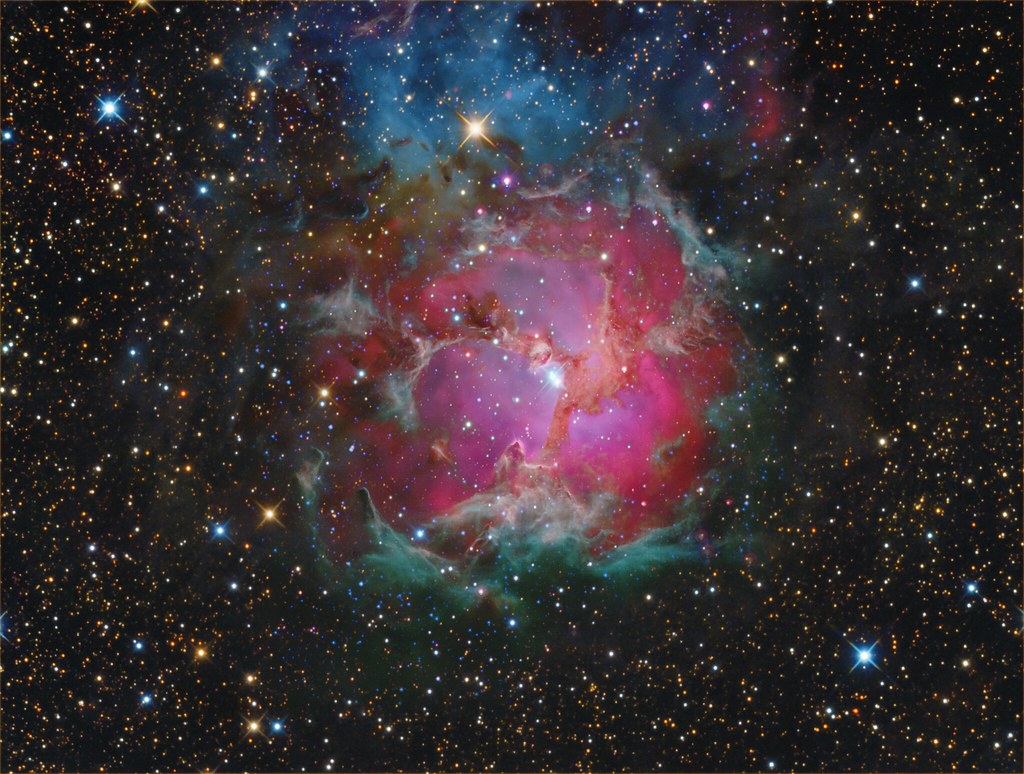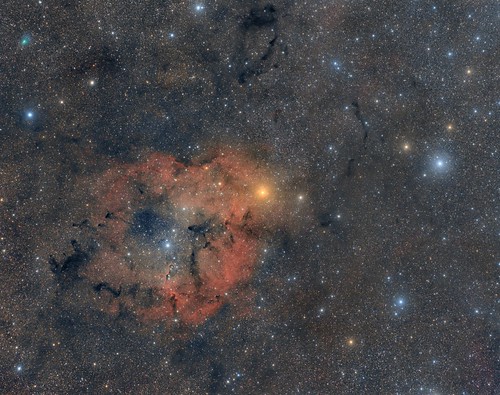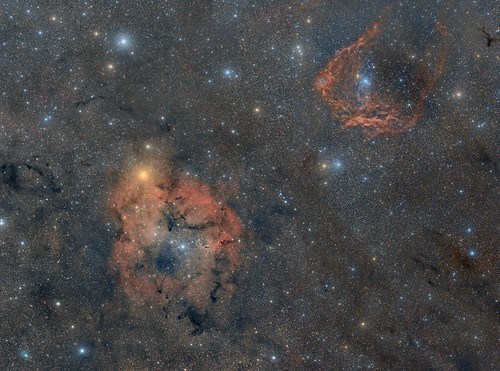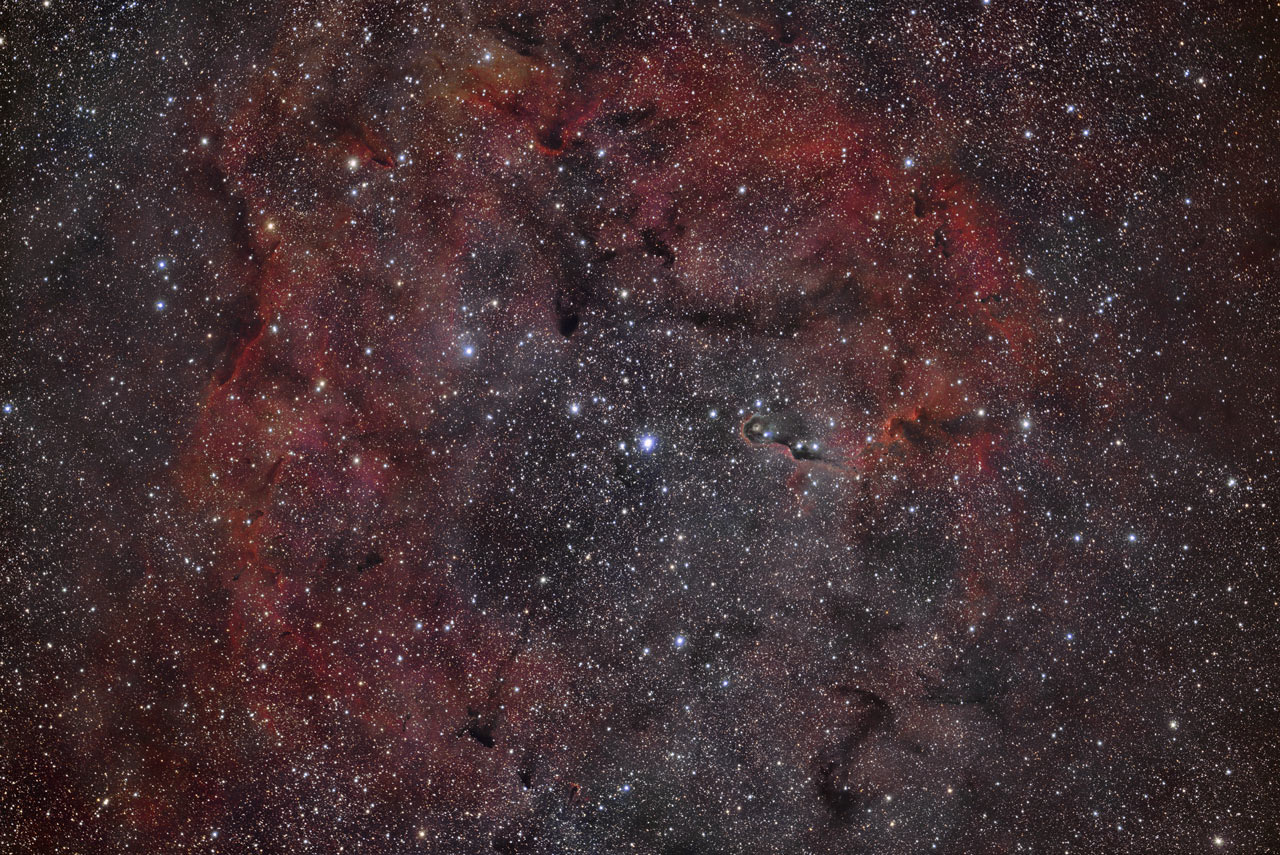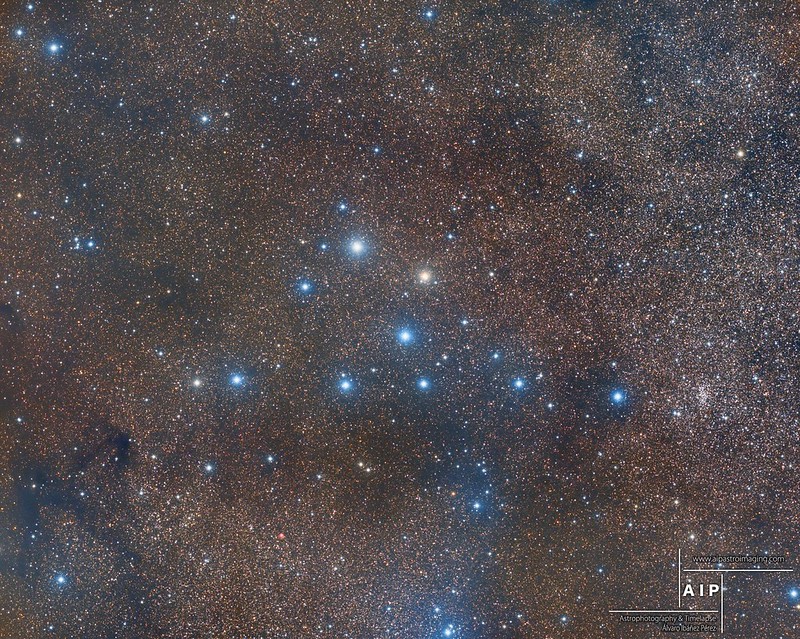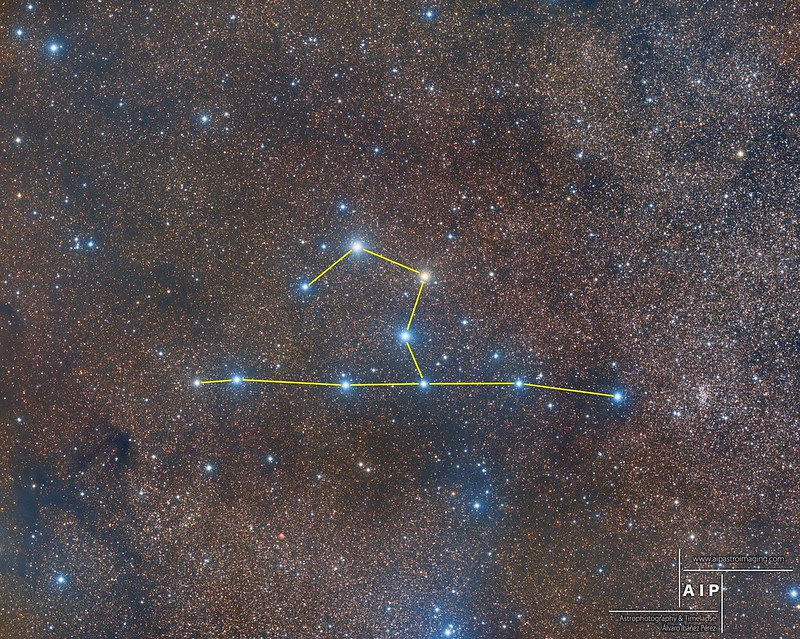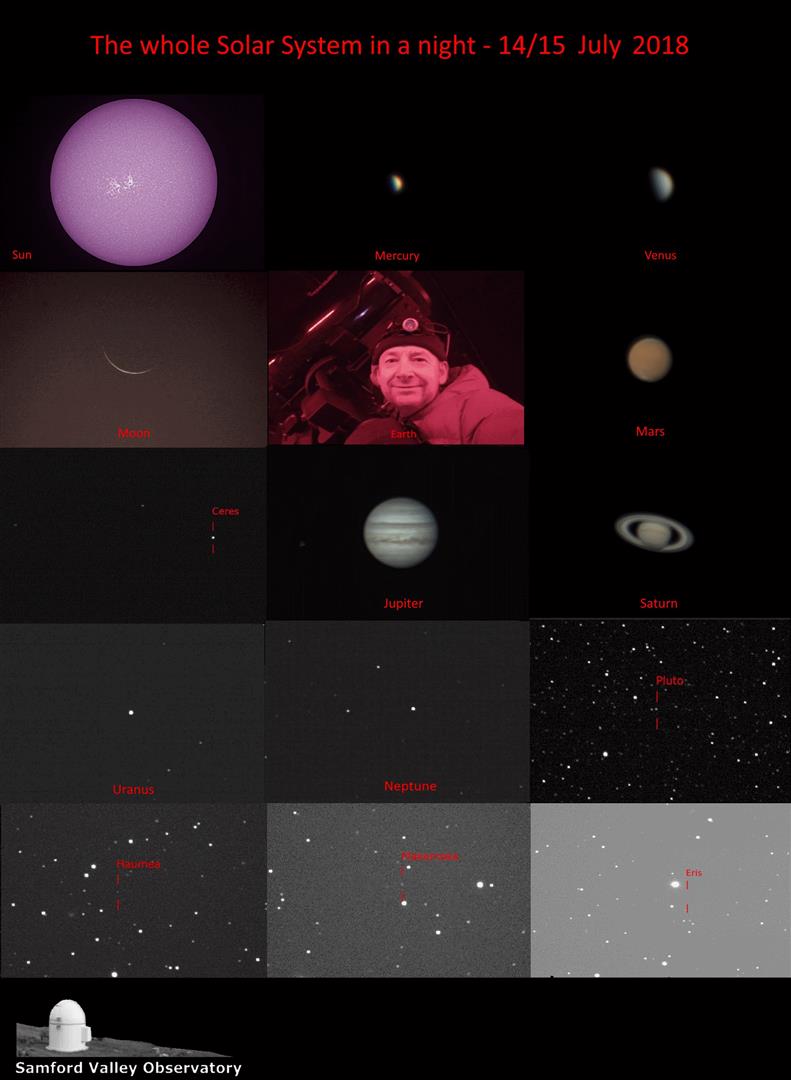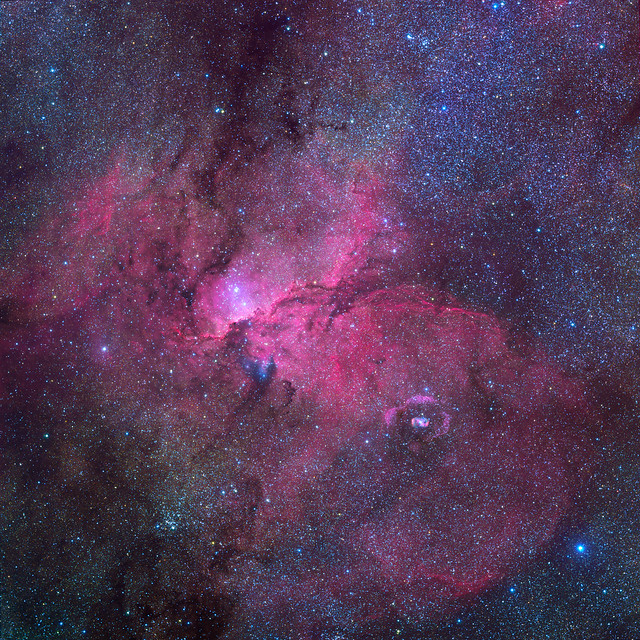Deep Image of Peculiar Shell Elliptical Galaxy NGC 3923 in Hydra
http://www.rolfolsenastrophotography.com
Copyright: Rolf Wahl Olsen
Link to large image: https://www.rolfolsenastrophotography.c ... t3tLKx4/X5
Some 90 million light years away, towards the Southern constellation Hydra, lies the peculiar shell elliptical galaxy NGC 3923. As of 2018, there doesn't seem to exist any other amateur images of this beautiful galaxy.
Its unusual appearance originate from past mergers with other nearby galaxies which have generated the myriad of concentric shells visible near the centre. This phenomenon is in fact not uncommon and many other elliptical galaxies host large shell systems, including the famous Centaurus A (NGC 5128), but the remarkable symmetry and large number of subtle shells is unique to NGC 3923.
The formation of such shells are a common observation in
computer simulations of merging galaxies.
The shells form when the cores of merging galaxies orbit around their common centre of mass in an ever tighter orbit while disrupting the halos of both galaxies and sending billions of stars into eccentric orbits. This process creates outward traveling density waves until the collision eventually settles as one single large galaxy.
Recent research based on deep images from the Canada-France-Hawaii Telescope have documented 42 concentric shells in NGC 3923, more than in any other known galaxy.
A prominent stream of stars is extending towards the lower right, terminating abruptly in a shell-like fragment (4 o'clock position). Visible within this stream is a small round galaxy, believed to be one of the merging progenitors of the shell system. The galaxy appears to be in the process of falling back towards the centre of NGC 3923, showing an almost comet-like tail of stars extending behind it.
Scattered throughout the field of view, far in the distant background, are numerous other individual galaxies and galaxy groups. Some are even visible through the diffuse glow from NGC 3923. Many lie several billion light years away and are visibly reddened by relativistic redshift caused by the expansion of the Universe.
Image details:
Date: 2018: 21st, 22nd, 24th, 25th, 29th, 31st May 2017
29th Jun 2017
15th, 16th, 23rd, 24th Feb 2018
9th, 25th March 2018
Exposure: LRGB: 1963:175:180:180 mins, total 41 hours 38 mins @ -25C
Telescope: Homebuilt 12.5" f/4 Serrurier Truss Newtonian
Camera: QSI 683wsg with Lodestar guider
Filters: Astrodon LRGB E-Series Gen 2
Taken from my observatory in Auckland, New Zealand


